| 参展艺术家|
王景春 肖彤彤 张洁(按姓氏首字母顺序排列)| 作品介绍 |
《三峡》
人们用“亘古不变”来形容山川河流,现在,山川真的要变了。
2003年6月1日,我们将目睹一个千万年从未有过的巨大变化。从这一天开始,长江三峡大坝以西400公里以内、海拔135米以下的数千城镇将消失在水面以下,数百万人口迁移。
三峡,长江最奇峻、壮丽的一段,也是长江最有性格的一段。它雄奇诡异、惊险莫测、激越飘荡。
这个充满险滩、恶水、沉船、死亡、抗争的地方,一切由险峻雄奇而来的故事都将戛然而止。它的奔腾跌宕、它的白浪滔天、它的剑气如虹,都将化为天水相接、烟波浩淼的一汪平静。
这是人类创造文明以来,对自然的一次最大规模的、绝无仅有的改变。
我们奔赴三峡,记录即将消失的三峡,记录长江曾有的性情,记录几千年来人们和长江相伴的朝朝暮暮生生死死。这一切我们无从忘却,因而无法告别。
路线:
涪陵——丰都——忠县——万州——云阳——奉节——秭归。
2002年至2003年,我是先后分五次进入三峡,先后累计70天左右。
2016年;我们再度踏上这块土地;以图片记录的方式;去观察这十多年来他们所发生的变化。
采访路线与十五年前一样:涪陵——丰都——忠县——万州——云阳——奉节——秭归
寻找当年的人和事;去记录他们这些年的工作生活的变化。
时隔多年后,现代三峡人走上了前辈的路。看着他们坚定的眼神和抿紧的嘴角,我们完全有理由相信,三峡人必将如他们的前辈一样开创新的历史和文明。他们是真正的英雄。
People use 'unchanging from ancient times' to describe mountains, rivers, and now, mountains and rivers are really about to change.
On June 1st, 2003, we will witness a tremendous change that has never happened in millions of years. From that day on, thousands of towns within 400 kilometers west of the Three Gorges Dam and below 135 meters above sea level will disappear below the water surface, and millions of people will migrate.
The Three Gorges, the most rugged and magnificent section of the Yangtze River, is also the most characteristic section of the Yangtze River. It is magnificent and eerie, thrilling and unpredictable, stirring and drifting.
In this place full of treacherous rapids, foul waters, sunken ships, death, and resistance, all the stories that come from the majesty of danger will come to an abrupt end. Its surging and tumultuous, its white waves surging to the sky, and its sword energy like a rainbow will all turn into a calm and vast expanse of mist and water.
This is the largest and unparalleled change in nature since humanity created civilization.
We rushed to the Three Gorges to record the disappearing Three Gorges, the temperament of the Yangtze River, and the lives and deaths of people who have been with the Yangtze River for thousands of years. We cannot forget all of this and therefore cannot bid farewell.
Route:
Fuling Fengdu Zhongxian Wanzhou Yunyang Fengjie Zigui.
From 2002 to 2003, I entered the Three Gorges Dam five times, with a total of about 70 days.
In 2016; We once again set foot on this land; Recording through images; To observe the changes that have occurred in them over the past decade.
The interview route is the same as 15 years ago: Fuling Fengdu Zhongxian Wanzhou Yunyang Fengjie Zigui
Search for the people and events of the past; To record the changes in their work and life over the years.
After many years, modern Three Gorges people have embarked on the path of their predecessors. Looking at their firm eyes and tight lips, we have every reason to believe that the Three Gorges people will surely embark on a new history and civilization like their predecessors. They are true heroes.

2002年5月4日, 涪陵堤防大坝工地
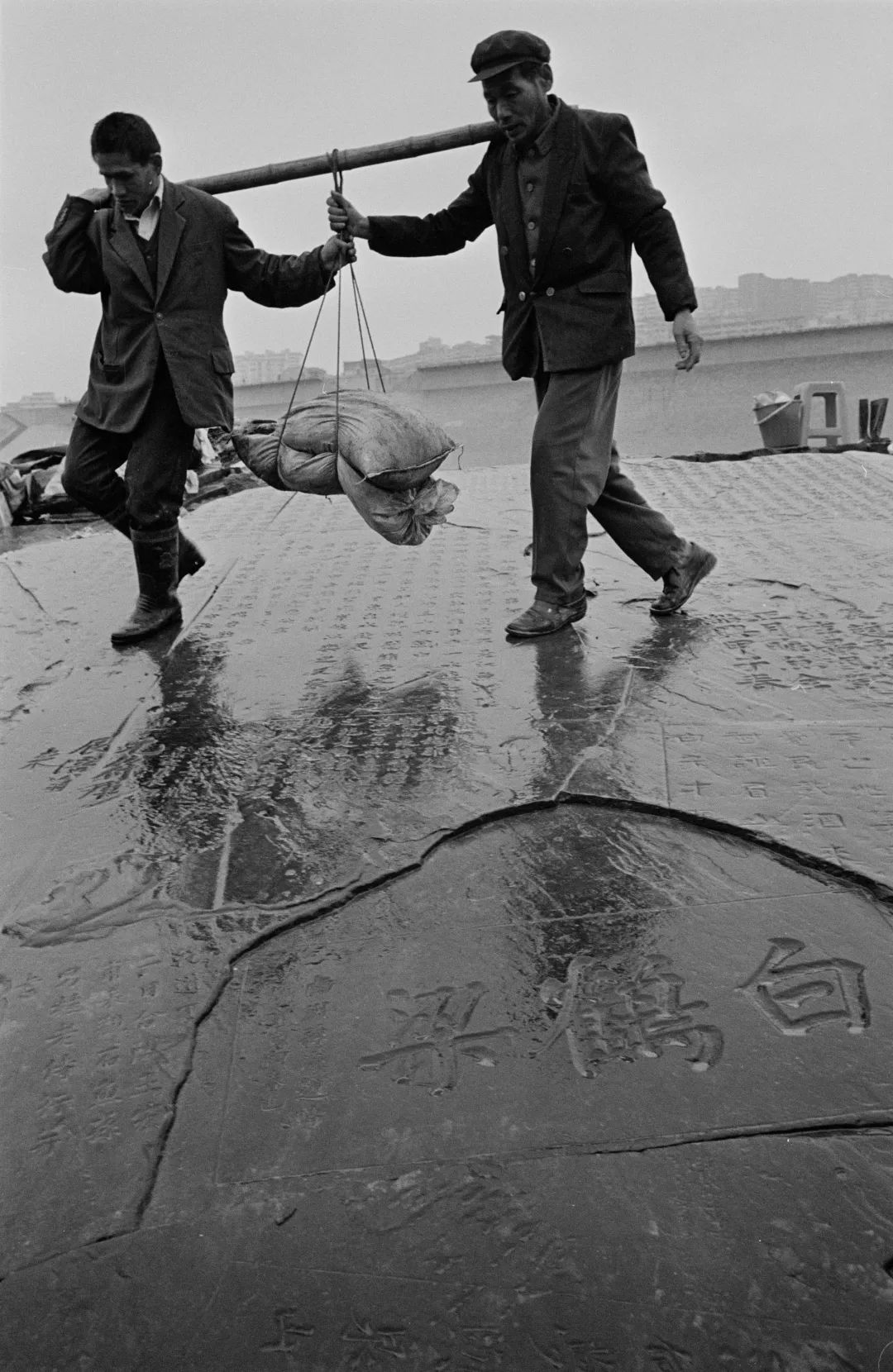
2002年2月12日 ,工人们正在为白鹤梁保护工程作准备

2002年7月4日, 屡屡不上靶的射击少年
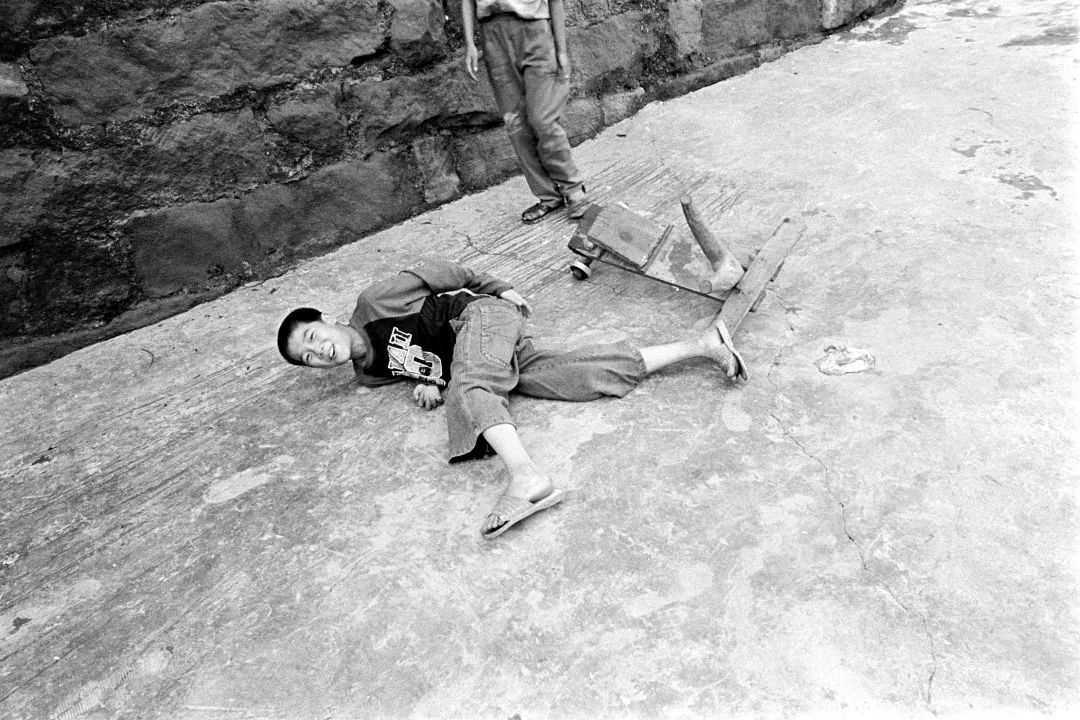
2002年10月10日, 伴随拆迁的击打, 孩子们自制玩具尽情玩耍
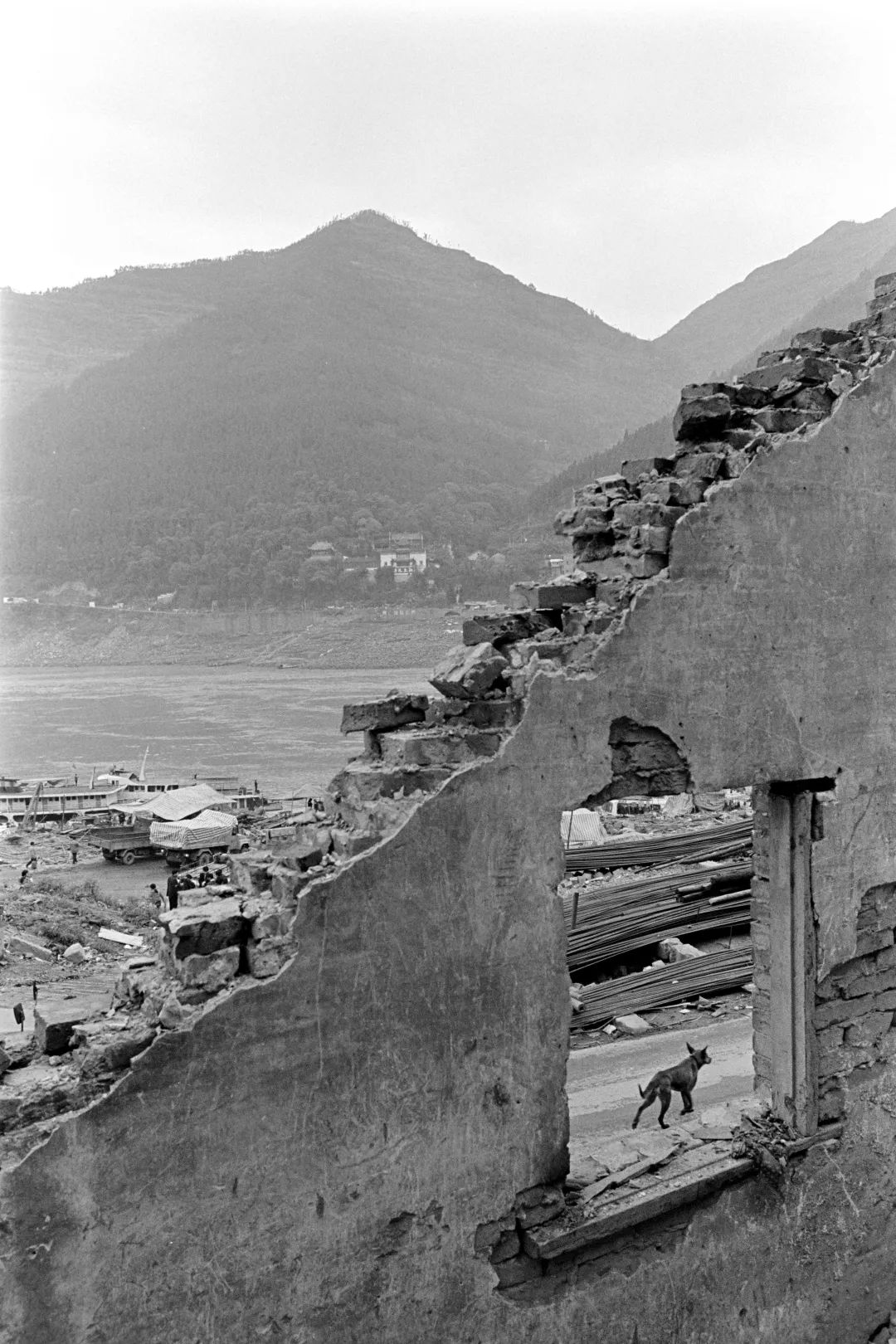
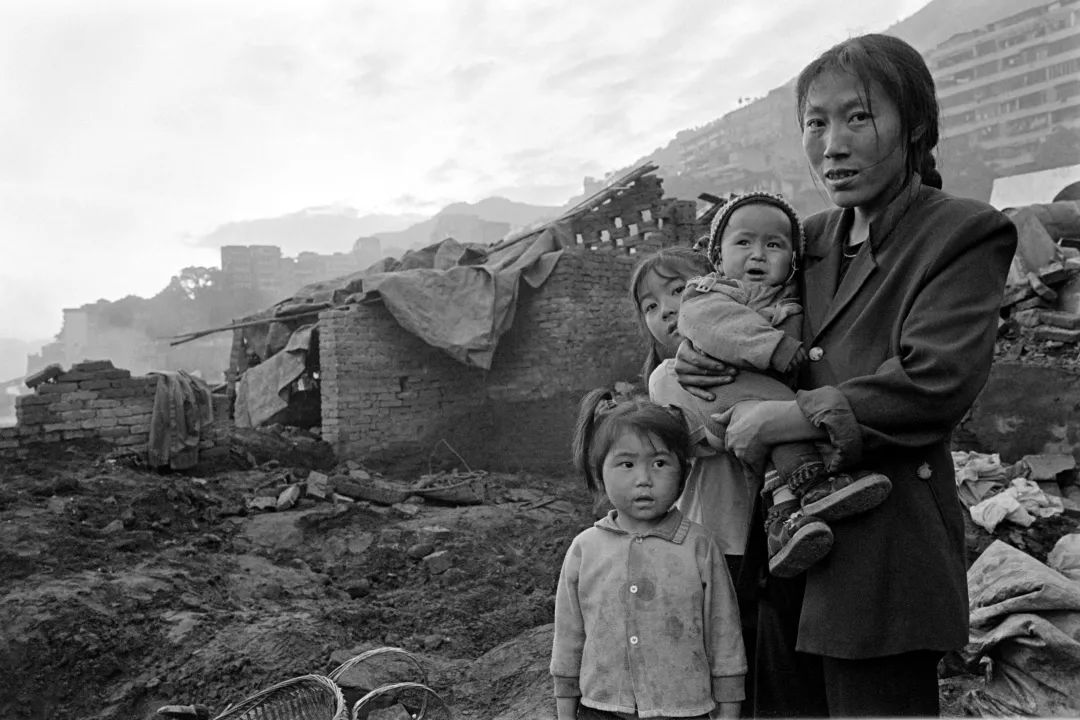
30岁的喻兰平带着三个孩子在拆掉的云阳沙湾铁匠铺中“淘”废铁

@王景春,《三峡》,云阳新城
2003年4月2日,步行寻找张飞庙新址途中江边上 雨中三人垂钓

2002年8月26日,雨中,殷永生的妻子陈光荣一手抱着一床棉絮,一手夹着一个像框,上面是他们逝去的老人的遗像
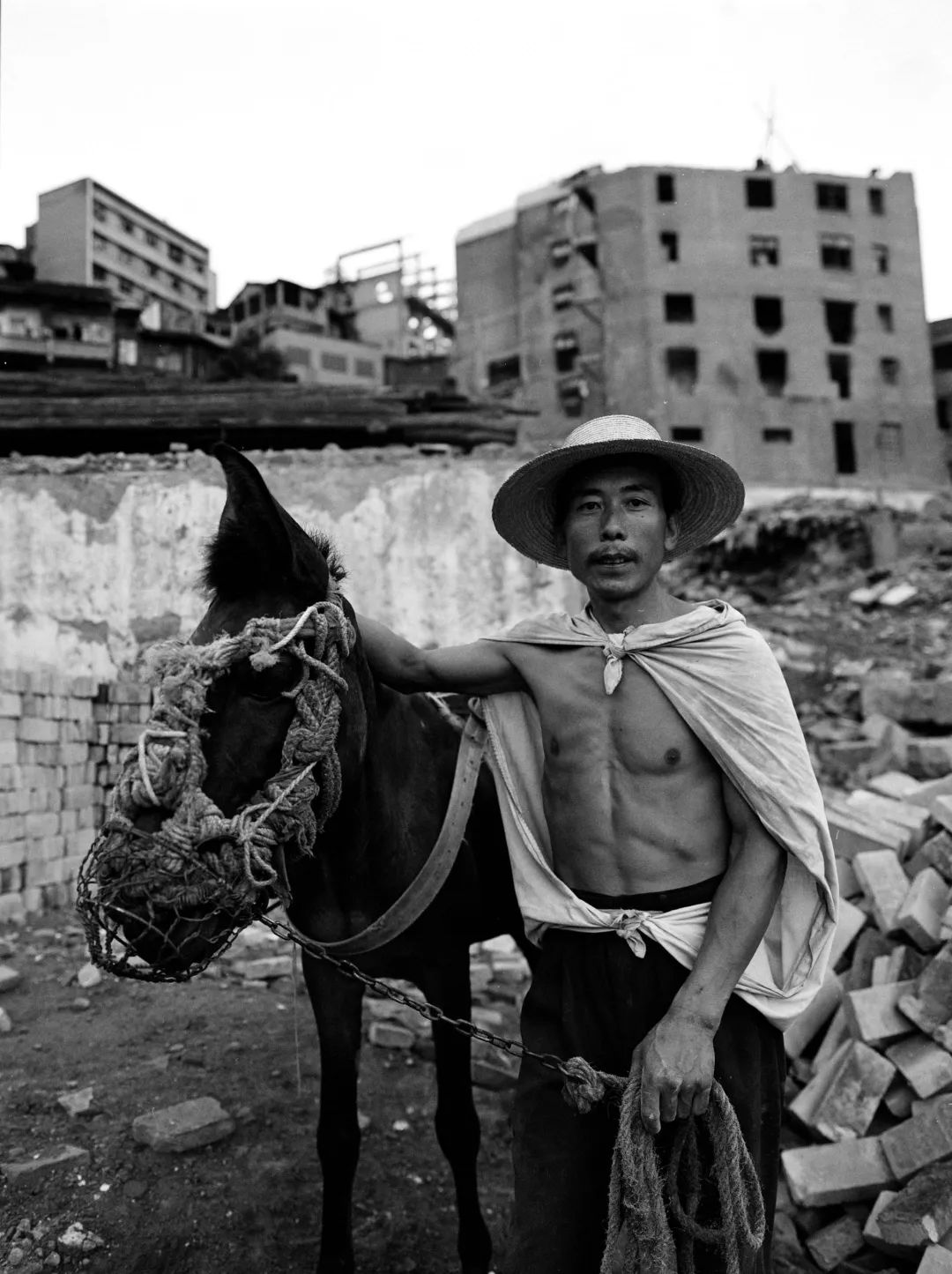
2002年10月4日,拆迁中的云阳旧城,骡子是其中一个主要运输工具
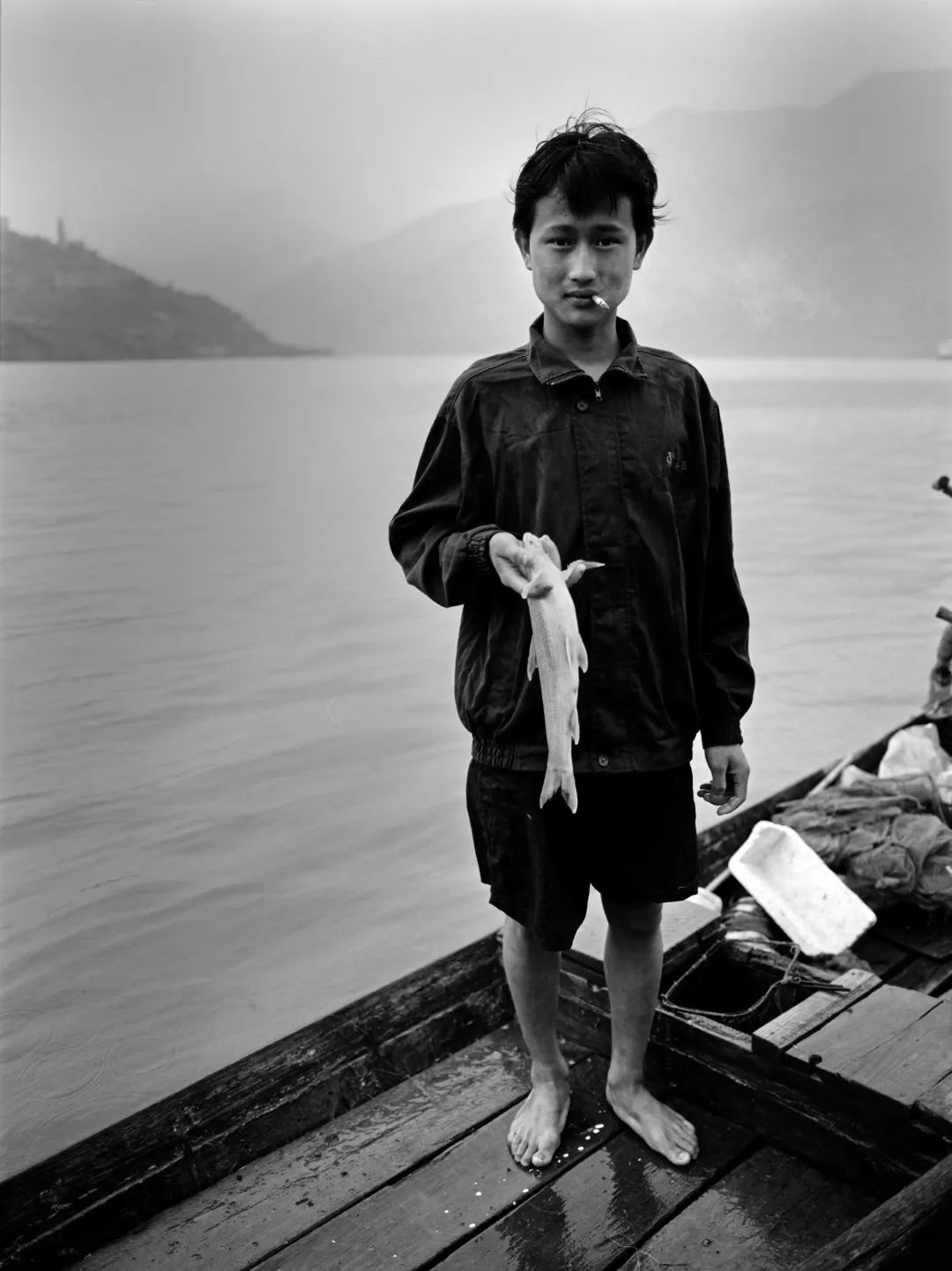
2003年6月2日,少年展示收获成果
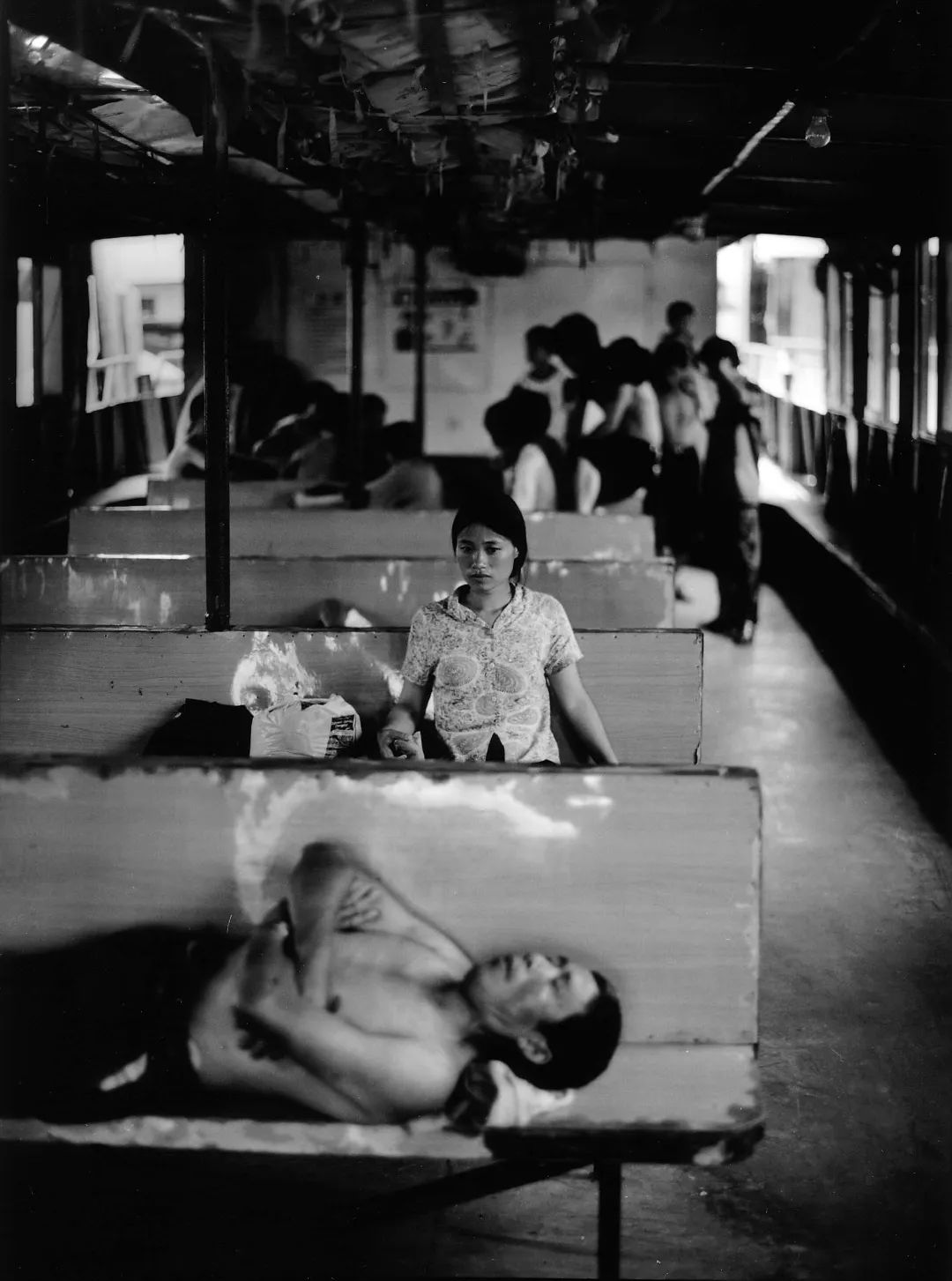
2002年10月2日, 巫山轮渡巫山女

| 艺术家简介 |
王景春 Wang Jingchun
文字发表
1.《初探报道摄影》:《南方新闻研究》(1999年3月刊,第19页)
2.《南方都市报:从流媒体到全能型记者培养》:《中国摄影报》(2011年12月16日)
3.《从摄影师到图片总监 都市报等等视觉成长和我的成长——王景春访谈》:《视觉十年·实战图编》系列丛书第26页(《南方日报出版社》,2008年)
4.《我办<目击>版面》:《视觉十年·实战图编》丛书第52页(《南方日报出版社》,2008年)
5.《交流:把握尺寸》:《视觉十年·实战图编》丛书第58页(《南方日报出版社》,2008年)
摄影作品发表
1.《目击》版面(《南方都市报》1998-2001)
2.《百年孤独症》(《城市画报》2001年4月刊,第16页)
3.《北部湾上打鱼人》(《南方周末》2002年4月11日)
4.《“三峡,无法告别”特别报道之开首篇》(《南方周末》2002年10月17日)
5.《“三峡,无法告别”特别报道之丰都篇》(《南方周末》2002年10月24日)
6.《“三峡,无法告别”特别报道之奉节篇》(《南方周末》2002年10月31日)
7.《盲艺人的乐与路》(《南方周末》2003年11月27日)
8.《版纳“和尚生”》(《南方周末》2003年12月25日)
9.《当牧民不再游牧》(《华夏人文地理》2005年7月刊,第116页)
10.《化刹那为永恒》:《视觉十年·呼吸影像》丛书第16页(《南方日报出版社》,2008年)
11.《博鳌小镇纪事》:《华夏地理》(2015年4月刊,第40页)
出版策划
策划统筹《视觉十年·呼吸影像》、《视觉十年·实战图编》丛书(《南方日报出版社》,2008年)
作品类
1.《三峡》专题(30幅)
2.《儿童罕见症》专题(20幅)
论文
《报道摄影概论》
1986年 开始接触摄影,作品有《少年时代》。
1997年 毕业于武汉大学新闻学院新闻学专业,同年分配到《南方都市报》,任摄影记者
2008年至2016年 任《南方都市报》视觉总监、编委
2008年 英国波顿大学摄影研究生
2001年 《新闻摄影三人展》 平遥国际摄影大展
2003年 《离骚·三峡》颜长江、王景春联展 上海原点画廊
2004年 《中国人本》纪实展 广东美术馆
2005至2006 连州国际摄影年展学术委员、策展人
2007年 《少年时代》《三峡》展览 上海美术馆
2009年至2012年 大理国际影会新媒体策展人
2018年 极光视觉《大江大河》之三峡篇《逝者如斯·长江三峡、金沙江、怒江、澜沧江影像考察》四人联展 上海M50
2012年 世界新闻摄影比赛(荷赛)新媒体评委
作品有《我是记者》《大海中的一条船》《白血病》《孤独症》《剑麻》《三峡》《哈萨克牧民定居》《十年喀什》等。
社会职务:
中国新闻摄影学会副会长,中国攝影家协会第七届新闻纪实委员会委员,中国攝影家协会第八届新闻摄影委员会委员,广东摄影家协会纪实委员会委员。
美国国家地理中国区大赛评委
金镜头评委
大理国际影会新媒体策展人
连州国际摄影节学术委员和策展人
作品类:
作为中国新闻记者的一个标志,《我是记者》先后获1998年“长江杯”全国抗洪抢险摄影比赛银奖 (中国新闻学会主办)、中国记协抗洪抢险摄影类三等奖、广东省98’年度新闻评选一等奖;
《生命中不能承受之痛》获1999年度人民摄影报社新闻评选日常生活类组照金奖;
《张朝阳,一个大孩子的终极游戏》获1999年度人民摄影报社新闻评选新闻人物类组照银奖;
《大海中的一条船》获1999年度人民摄影报社新闻评选自然环境类组照铜奖;
《孤独症》获2000年度人民摄影报社新闻评选日常生活类组照银奖;
《普京36小时中国行》在第十一届中国新闻奖摄影作品复评暨2000全国新闻摄影作品年赛中获金奖,中国新闻奖三等奖(编辑类);
2000年在山东东营一品国际摄影节获年度报道奖;
2001年,《新闻摄影三人展》亮相在平遥国际摄影大展;
2003年,在上海原点画廊举办颜长江、王景春联展《离骚·三峡》;
2004年,作品入选广东美术馆举办的大型纪实展《中国人本》;
2007年2月,上海美术馆举办《少年时代》《三峡》展览;
2018年7月,极光视觉展览《大江大河》之三峡篇《逝者如斯·长江三峡、金沙江、怒江、澜沧江影像考察》亮相上海M50。
2016年,成立“极光视觉”,这是一个由“优秀报道摄影师+策展人/编辑”构成的视觉原创机构,恪守“摄影推动社会进步”的朴素愿景。
2017年,与报道摄影师陈杰、郭现中、吴俊松开启为期一年的长线选题《大江大河》,并于2018年在上海举办《大江大河》之《逝者如斯·长江三峡、金沙江、怒江、澜沧江影像考察》四人联展,开创一条在新媒体环境下的摄影报道新路。
2017年至2020年,作为主创人员参与中国文联和中国摄协、中国民协共同启动的“影像见证新时代 聚焦扶贫决胜期2018-2020大型影像跨界驻点调研创作工程”,2018年10月,作品亮相中国文联中国文艺家之家展览馆的《“影像见证新时代 聚焦扶贫决胜期2018-2020大型影像跨界驻点调研创作工程”2018年汇报展览和调研创作多媒体短片展播》,2020年,相关图文书由中国摄影出版社。
Text publication
1. "Preliminary Report Photography": "Southern News Research" (March 1999, page 19)
2. Southern Metropolis Daily: From Streaming Media to Training All round Journalists: China Photography Daily (December 16, 2011)
3. Visual Growth and My Growth from Photographer to Photo Director, Metropolis Daily, etc. - An Interview with Wang Jingchun: Page 26 of the series of "Visual Decade · Practical Picture Editing" (Nanfang Daily Press, 2008)
4. The "Eyewitness" Page of our Office: Page 52 of the series of "Ten Years of Vision · Actual Combat Pictures" (Nanfang Daily Press, 2008)
5. Communication: Grasping the Size: Page 58 of the Series of Vision Decade · Actual Battle Picture Compilation (Nanfang Daily Press, 2008)
Publication of photography works
1. Witness page (Southern Metropolis Daily 1998-2001)
2. "Centennial Autism" (April 2001, Urban Pictorial, p. 16)
3. Fisherman in Gulf of Tonkin (Southern Weekly, April 11, 2002)
4. The First Part of the Special Report of "Three Gorges, No Farewell" (Southern Weekly, October 17, 2002)
5. "Three Gorges, Can't Say Goodbye" Special Report - Fengdu Chapter (Southern Weekly, October 24, 2002)
6. Fengjie Chapter of Special Report on "Three Gorges, No Farewell" (Southern Weekly, October 31, 2002)
7. Music and Road of Blind Artists (Southern Weekly, November 27, 2003)
8. Banna "Monk" (Southern Weekly, December 25, 2003)
9. "When Herders No longer Nomadic" (July 2005 issue of Huaxia Cultural Geography, page 116)
10. Turn Moments into Eternity: Page 16 of the Vision Decade · Respiratory Images series (Nanfang Daily Press, 2008)
11. "Chronicle of Boao Town": "Geography of China" (April 2015, p. 40)
Publishing Planning
Planning and coordinating the series of "Vision Decade · Respiratory Images" and "Vision Decade · Practical Map Compilation" (Nanfang Daily Press, 2008)
Works
1. Special Topic of "Three Gorges" (30 pieces)
2. Special topic of "Rare Disorders in Children" (20 pieces)
paper
Introduction to Reporting Photography
I started working on photography in 1986, and my works include "Youth".
Graduated from Journalism major of School of Journalism, Wuhan University in 1997, and was assigned to Southern Metropolis Daily as a Photojournalism in the same year
From 2008 to 2016, he served as the visual director and editorial board member of Southern Metropolis Daily
2008 Postgraduate student in photography at the University of Bolton, UK
2001 "News Photography Triple Exhibition" Pingyao International Photography Exhibition
2003 "Li Sao · Three Gorges" Yan Changjiang, Wang Jingchun Joint Exhibition Shanghai Origin Gallery
2004 "Chinese People" documentary exhibition at Guangdong Art Museum
Academic member and curator of the 2005-2006 Lianzhou International Photography Annual Exhibition
In 2007, Youth and Three Gorges were exhibited in Shanghai Art Museum
New Media Curator of Dali International Film Festival from 2009 to 2012
In 2018, the four person joint exhibition of the Three Gorges chapter of Aurora Vision's "Great Rivers", "The passage of time is like this", an image survey of the Three Gorges, Jinsha River, Nu River and Lancang River, Shanghai M50
Judge of New Media of World Press Photo 2012 (Netherlands)
His works include "I am a journalist", "A ship in the sea", "Leukemia", "Autism", "Sisal hemp", "Three Gorges", "Settlement of Kazakh herdsmen", and "Ten Years of Kashgar".
Social position:
Vice President of China News Photography Society, member of the 7th News Documentary Committee of China Photographers Association, member of the 8th News Photography Committee of China Photographers Association, and member of the Documentary Committee of Guangdong Photographers Association.
Judges of the National Geographic China Competition in the United States
Golden lens judges
New Media Curator of Dali International Film Festival
Academic Committee Member and Curator of Lianzhou International Photography Festival
Works category:
As a symbol of Chinese journalists, I Am a Journalist has won the silver prize in the 1998 "Yangtze River Cup" National Flood Relief Photography Competition (sponsored by the China Journalism Society), the third prize in the flood relief photography category of the China Writers Association, and the first prize in the '98' annual news selection of Guangdong Province;
The unbearable pain in life "won the Gold Award in the Daily Life category in the 1999 People's Photography News Selection;
Charles Zhang, the ultimate game of a big child, won the silver medal in the group photos of news figures in the People's Photography News Selection in 1999;
A Ship in the Sea "won the Bronze Award for Natural Environment Photography in the 1999 People's Photography News Selection;
Autism "won the Silver Award for Daily Life Photography in the 2000 People's Photography Daily News Selection;
Putin's 36 Hour Journey to China won a gold medal and a third prize in the China News Award (editorial category) at the 11th China News Award Photography Review and 2000 National News Photography Competition;
Received the Annual Report Award at the Shandong Dongying Yipin International Photography Festival in 2000;
In 2001, the "News Photography Three Person Exhibition" appeared at the Pingyao International Photography Exhibition;
In 2003, Yan Changjiang and Wang Jingchun held a joint exhibition titled "Li Sao · Three Gorges" at the Origin Gallery in Shanghai;
In 2004, the work was selected for the large-scale documentary exhibition "Chinese Humanism" held by Guangdong Art Museum;
In February 2007, the Shanghai Art Museum held the "Youth" and "Three Gorges" exhibitions;
In July 2018, the Three Gorges chapter of the Aurora Vision Exhibition "Great Rivers", "The passage of time is like this", an image survey of the Three Gorges, Jinsha River, Nu River and Lancang River, "appeared in Shanghai M50.
In 2016, Aurora Vision was established, a visual original organization composed of "excellent reporting photographers+curators/editors", adhering to the simple vision of "photography driving social progress".
In 2017, we launched a one-year long term topic selection of "Big Rivers" with report photographers Chen Jie, Guo Xianzhong and Wu Junsong, and held a joint exhibition of "How Time Passes by, Three Gorges of the Yangtze River, Jinsha River, Nujiang River and Lancang River Images Investigation" of "Big Rivers" in Shanghai in 2018, creating a new way of photographic reporting in the new media environment.
From 2017 to 2020, as the main creator, I participated in the "Image Witness New Era Focused Poverty Alleviation Decisive Period 2018-2020 Large Image Cross border Station Research and Creation Project" jointly launched by the China Federation of Literary and Art Circles, the China Film Association, and the China People's Association. In October 2018, The work appeared in the "2018 Report Exhibition and Multimedia Short Film Exhibition of the" Image Witness New Era Focused Poverty Alleviation Victory Period 2018-2020 Large Image Cross border Station Research and Creation Project "at the China Federation of Literary and Art Circles China Literature and Art Home Exhibition Hall. In 2020, the relevant graphics and texts were published by China Photography Publishing House.
| 作品介绍 |
《时间之境》
“照片独一无二的力量,就在于已呈现的会激发出未被呈现的。”约翰·伯格
在瓦尔特 本雅明看来:“从本质上能够判断摄影的,永远是摄影师与他的技术之间的关系。”
肖彤彤是一位执着于摄影术本体技艺 : 从光学器材到化学工艺,从经典材料到数码技术,并长期沉溺于其中的摄影家。自早年的 135 始,及至 120、617、4×5、8×10、乃到 24 吋、32 吋干版页片的特性所长,从海鸥到基辅,从禄来、莱卡到林好夫、福伦达 的镜间脾性软硬,由针孔成像数小时的曝光时间,至百分之一、千分之一的刹那,时间与光线媾和的映迹,令肖彤彤沉 浸其中、乐此不疲。多年以来孜孜不懈地迷恋于技艺视觉与情绪表现的可能性通道。
曾在八十年代得以进入中国第一批摄影高等科班教育(武汉大学)的肖彤彤,在其后来的影像实践里,显示出了扎实的 基本功力。其时的踌躇满志并没有让他沿着这个方向持续前行,汹涌而来的改革开放洪流,旋卷其投身弄潮。与摄影的 暂别,却是让他未曾少了对影像的牵挂。经年之后的回归,已经是极大地丰富了他生活的阅历和艺术的学识。
“照片独一无二的力量,就是在于已呈现的会激发出未被呈现的。”约翰·伯格对照片魅力的揭示,正是我们感受肖彤彤作品的路径。“照片的瞬间里,包含了具有普遍意义的事实的某些量子,在于未被它呈现的也如同它所呈现的那样富 于启发性……。”在肖彤彤的镜头中,关注量最大的对象,是自然景观之中的植物——“树”,似乎是作为一个生命的征喻。树的形象、树的姿态,从整体到局部,繁复地被他用各种不同的器材、不同的镜头、从不同的角度,千姿百态地描摹着, 或悠扬、或刚劲、或妩媚、或苍猶,树的风、树的花、树的雪、树的月……,树的主题不仅成为他精神诉说的主体象征,亦是其生命情绪的映现与折射。
法国艺术史论家于贝尔认为 :“摄影在美学场域内的有效性不能与它的机械性区分开来"。而肖彤彤艺术的出发点,正是在摄影的本体性技艺,在长期谙悟了 影像器械与技术控制的韵律后,他从对物像景观的迷恋性描摹走向了情绪化表现。形体的意向开始成为他的表现侧重,具象的元素开始蒸发,愈加地趋向了物 体的抽象。对技术的抉择,对时间的操控,赋予了作品独特的气质,手段改变了对象和视觉图像主题原有的内涵。镜头里物象本身的再现功能常常被有意的忽略甚至是完全抛弃了,没有任何实体的物,只有一抹颜色留下关联时间的痕迹。模糊或者空白的场域成为了书写感知的领地。这种似乎是现象学式地观看世界 的方式,或是在提示着:这就是我们所居住的世界本身,既是自然的世界,又是历史的世界,也是着有人类痕迹的世界。作者将最丰富的感知和对世界的体验注入了他的视觉表现之中。而肖彤彤用器械设备和技术能力呈现出现实景观原本看不见的东西,这正是当下视觉文化特征之一——将客观世界里并非视觉性的东西予以视觉化。
肖彤彤的摄影,因为不能割舍的热爱,亦在他人生的道路上接续走出了时间的景深。 而他影像的内在主题,亦是由时间与他感受的质感,构成了照片作为平面的纵深……。
2019 年 4 月 15 日于郑州
The Realm of Time
The unique power of a photo lies in the fact that what has been presented stimulates what has not been presented. In Walter Benjamin's view, "What fundamentally determines photography is always the relationship between the photographer and his skills.
Xiao Tongtong is a photographer who is dedicated to the essential skills of photography, from optical equipment to chemical processes, from classic materials to digital technology, and has long been addicted to them. From 135 in the early years to 120, 617, and 4 × 5. 8 × 10. It is the characteristic of 24 inch and 32 inch dry plate pages, from seagull to Kiev, from Lulai and Leika to Lin Houfu and Voigtländer, with soft and hard temper between mirrors, from the exposure time of pinhole imaging for several hours to one hundredth and one thousandth of an hour, and the reflection of time and light making Xiao Tongtong immerse in it and enjoy it. For many years, I have been tirelessly obsessed with the possibility of artistic visual and emotional expression channels.
Xiao Tongtong, who was able to enter China's first group of higher photography courses (Wuhan University) in the 1980s, showed solid basic skills in his later imaging practice. At that time, his complacency did not allow him to continue moving in this direction, and the surging tide of reform and opening up swept him into the tide. The temporary departure from photography has not diminished his concern for images. After years, his return has greatly enriched his life experience and artistic knowledge.
The unique power of photos lies in the fact that what has been presented will inspire what has not been presented. "Johann Berg's revelation of the charm of photos is precisely the way we experience Xiao Tongtong's works. "In the moment of a photo, there are some quanta of facts of universal significance, because what is not presented by it is also as enlightening as what it presents..." In Xiao Tongtong's lens, the object of greatest concern is the plant in the Natural landscape - "tree", which seems to be a symbol of life. The image and posture of the tree, from the whole to the parts, are intricately portrayed by him using various equipment, lenses, and angles, in various forms, whether melodious, vigorous, charming, or ethereal. The wind, flowers, snow, and moon of the tree not only become the main symbol of his spiritual expression, but also the theme of the tree, It is also a reflection and reflection of their life emotions.
French art historian Hubert believed that: The effectiveness of photography in the aesthetic field cannot be distinguished from its mechanical nature. However, the starting point of Xiao Tongtong's art is precisely in the ontological art of photography. After a long understanding of the rhythm controlled by imaging equipment and technology, he went from a fascination with describing the scenery of objects to emotional expression. The intention of the form began to become his focus of expression, and the concrete elements began to evaporate, increasingly tending towards the abstraction of objects. To the technique The choice of art and the manipulation of time endow the work with a unique temperament, and the means change the original connotation of the object and visual image theme. The reproduction function of the object itself in the lens is often intentionally overlooked.
Slightly or even completely abandoned, without any physical objects, only a trace of color leaving a correlation with time. The blurry or blank field has become the territory of writing perception. This seems to be a phenomenological way of viewing the world, or a reminder that this is the world we inhabit, which is both a natural world and a historical world, as well as a world with human traces. The author infuses the richest perception and experience of the world into his visual expression. And Xiao Tongtong uses equipment and technical abilities to present things that were originally invisible in the real landscape, which is one of the characteristics of current visual culture - to make the objective world non visual Visualization things.
Xiao Tongtong's photography, due to his unwavering love, has also continued to transcend the depth of time on his path of life. The inner theme of his image is also composed of time and the texture he feels, forming the depth of the photo as a plane.
Zhengzhou, April 15, 2019
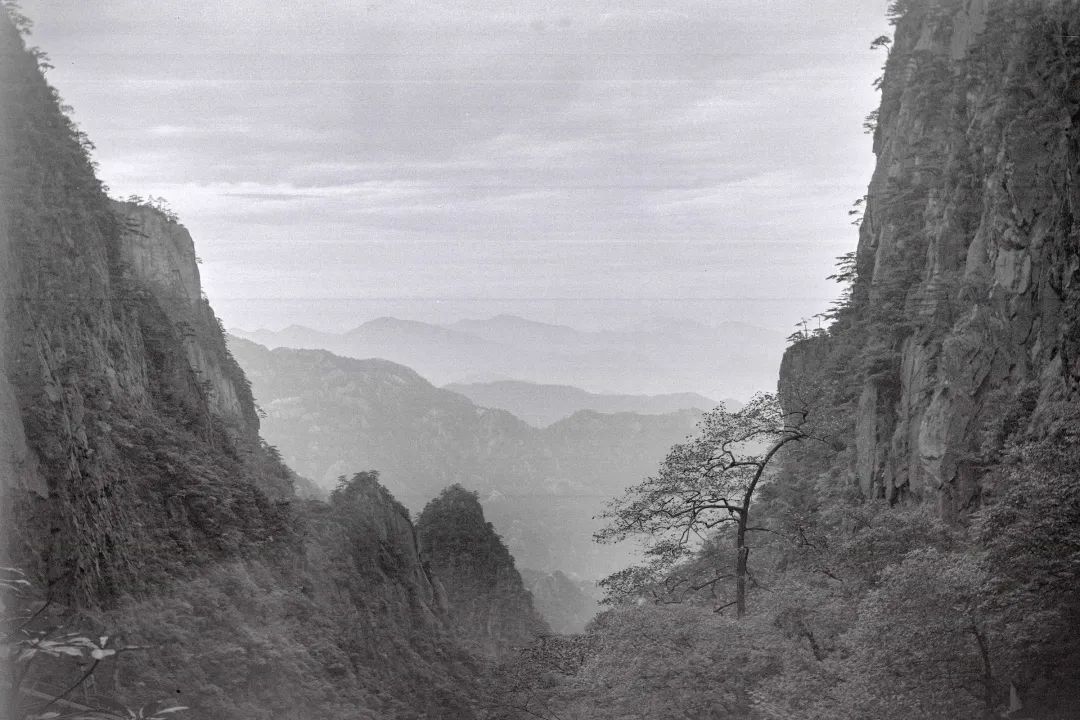
@肖彤彤,《时间之境》,2015
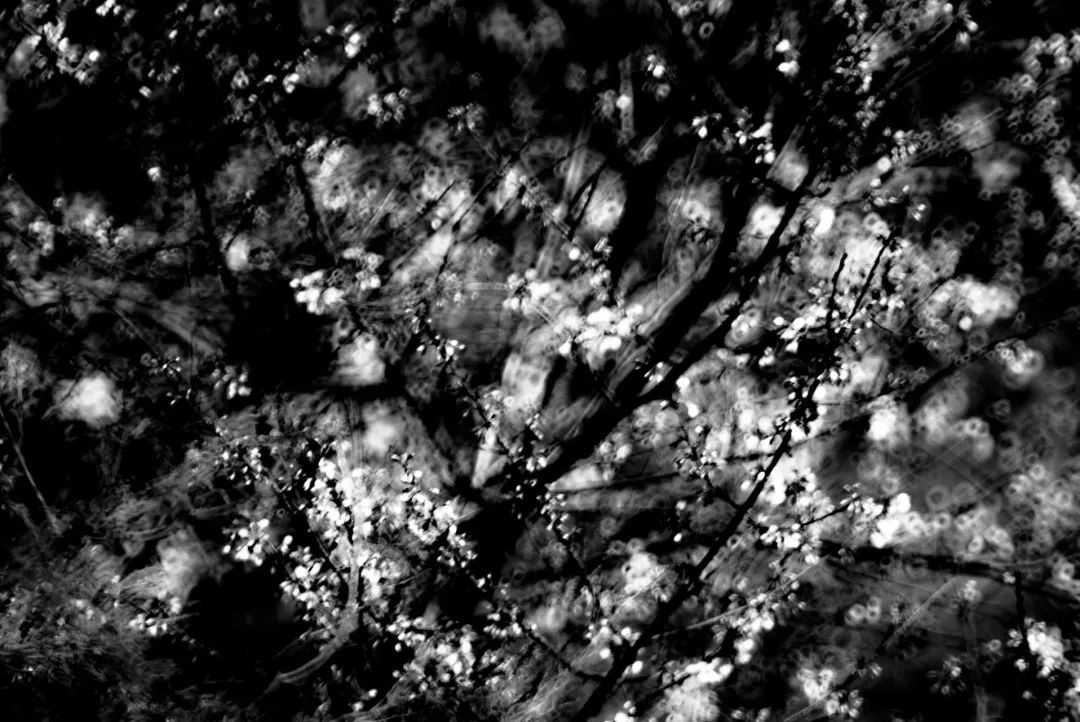
@肖彤彤,《时间之境》,2019
| 艺术家简介 |
肖彤彤 Xiao Tongtong
肖彤彤,早年毕业于武汉大学摄影专业,现工作生活在珠海,香港。
Xiao Tongtong, a graduate of photography from Wuhan University in his early years, works and lives in Zhuhai, Hong Kong.
|作者自述 |
另一种答案
走入搭着帐篷的曲剧演出幕后纯属偶然。在化妆更衣的演员当中穿行,仿佛置身世外,在虚幻与现实之间游离切换。
驻足停留,除了眼前充斥的混杂跳跃的颜色,重要的是演员间毫无隔碍的交流,舞台上是默契的配合,舞台后是鲜活浓烈的烟火气。串场、更衣、就餐、休息……,一切可以相处的瞬间都能碰撞出不一样的火花,各种冷不丁的调侃逗趣都充满着非现实的轻松与温暖,仿佛几辈子的亲人终于相遇,又好似戏里戏外都活出了通透清朗的人生,那是戏曲表演者独有的情感交流。虽然他们穿着各色服装、化着各色妆容、演绎着不同角色,但很显然,他们之间的亲近是纯净且不掺杂任何色彩的。
这些景象使我不太敢思考如何去拍,生怕大脑的介入干扰或弱化了对现场的感受,试图跟随他们的节奏去找寻一些灵感的可能,更多时候是默默站在某个角落充当空气,看着他们台上台下来回穿梭,频繁的更换服装,紧张的练功,亲密无间的调侃,驾轻就熟的进入不同角色,乐此不疲的沉浸其中……
相当长的一段时间处于迷茫之中,就像最初的样子,按快门的手和脑之间的链接似乎是断掉的,且很长时间内并不知晓,那一次次牵引我翻山越岭追寻他们足迹的东西到底是什么?曾经以为,在长期的拍摄后,会有清晰而明确的地图,会能看到最初试图找寻的答案,会知道自己要拍什么,或者拍成什么,但现实的答案却是另一种,一种完全不由人设定和设想的。
有人说,“改变自己最有效的方法就是做自己害怕的事”,在成长的很长一段时期内,我都认为自己是个跟人群有距离感的人,短板明显多于长处,那是从童年起就莫名存在的一种恐惧与习惯。所以,当走进戏曲表演的后台,看到嘈杂热闹的场面,拥挤的各色演员,熟络温热的气息,使我意识到,眼前有比按快门更困难的事,那也许是可以刺激我感观内核的东西,是可以催生一部分新的自我的东西。尝试,是件美好的事,尝试自己没有做过的,尝试自己想做又害怕的。而事实上,做之前的设想和做之后的结果往往天渊之别,出人意料,充满着戏剧性的魔幻,也充斥着各种可能。
于是一次次,在耀眼的舞美和激跃的唱腔旁,我形同他们的影,记录着那些其实并不耀眼的瞬间,感受着那份不同寻常的寻常温度,找寻着自我内心深处的答案。带着疑问的人总是会去做许许多多的“无用”功,如同探寻答案的时候会感到惶惶不安、焦虑失措。在那些个当下,除了坚持就只有等待,但只要不停止问问题,不停止找答案,总会在那些看似枯燥无味的重复里偶尔清醒那么一两回,然后,顺着那些许闪烁的微光继续走下去……
记不清哪天起,答案变得不再重要。进入他们的瞬间仿佛也成为了他们,跟随那些熟悉不过的场景、人物、说唱、道具不断的来回转换奔波,感受那些喜怒哀乐惊奇跌宕,好似是我,也不是我。
好似无趣,又很有趣。
Another Answer Finally Zoomed in
Accidentally, I stepped into a backstage behind the curtain in an opera tent. Passing the performers wearing makeups and the ones changing costumes, you can feel as if you were in another world, switching back and forth between fantasy and realities.
Stopping for a pause, you find yourself immersed in the jumbled dazzling colors, and a scenario of hustle and bustle warmly welcomes you behind the stage: changing costumes, scenes’ switching, resting, eating and drinking... key points lay on the unimpeded communication between actors and actresses, which results in the tacit cooperation on the stage. All kinds of unexpected teasing and jokes are full of unrealistic ease and warmth, as if relatives of several generations met each other in an occasion or they enjoy a crystal clear and transparent life both in and out of the dramas, which is the unique emotional exchange among opera performers. Despite their colorful costumes, makeups and roles, it is clear that their closeness is pure without any social impurities.
These scenes made me hesitate to think about how to shoot, fearing that the intervention of my brain might interfere with or weaken my sensation to the scene, so I tried to find some inspiration by following their rhythms. Most of the time, I would stand silently in a corner and acted as air, watching them moving back and forth on and off the stage, frequently changing their costumes, practicing their skills nervously and making fun of each other, stepping into different roles with ease and never getting bored...
I was confused for quite a long time. Just like at the first beginning, the connection between my hand and my brain to press the shutter seemed disconnected, which I was unaware of for quite a little while: What motivated me to follow their footsteps over the mountains again and again? I once believed that after a long period of shooting, I would have a clear and definite clue, and I would be able to have the answer why I was trying to find at the beginning, and I would know what I was going to shoot or what I would achieve. Yet in reality, the answer is another kind: neither to be planned nor to be accomplished subjectively.
Some people say, "The most effective way to change yourself is to do what you are afraid of." For a long time while I was growing up, I thought that I was a person with a sense of distance from the crowd. My weaknesses obviously outweigh my strength, a kind of fear and habit which had inexplicably existed since my childhood. Therefore, when I walked into the backstage of the opera performance and saw the noisy and lively scenes, the various crowded performers and the chummy and warm atmosphere, I realized that there was something more difficult in front of me than pressing the shutter. It might be something that could stimulate my sensory core, something that could give birth to a part of my new Self. It is a beautiful thing to try what you haven't done, to try what you want to but are afraid to do. In fact, what you expect before you do and the result of what you do are often vastly different, unexpected, dramatic, magical, and full of possibilities.
So, again and again, in the gorgeous dances and beautiful singings, I became their shadow, to document each not-so-splendid moments, to sense out the unique from the usual temperature, to search for the answer from the bottom of my heart. People with questions usually do a lot of “useless” jobs, in eagerness, panic, and anxiety for the quiz. But as long as you do not stop asking questions, do not stop looking for answers, you may experience one or two sober occasions during the seemingly boring repetitions. And then, you will move on towards the flickering faint lights...
I failed to remember from which day on, I did not tangle with the Answer any more. Instead, the instant I enter into their group, I have become one of them, following the scenes, characters, raps and props that I am so familiar with, pulsing the ups and downs, joys or sorrows, thrills with excitements...
Seemingly, it is me; whatever, not me.
Seemingly, boring; yet, it IS full of fun!
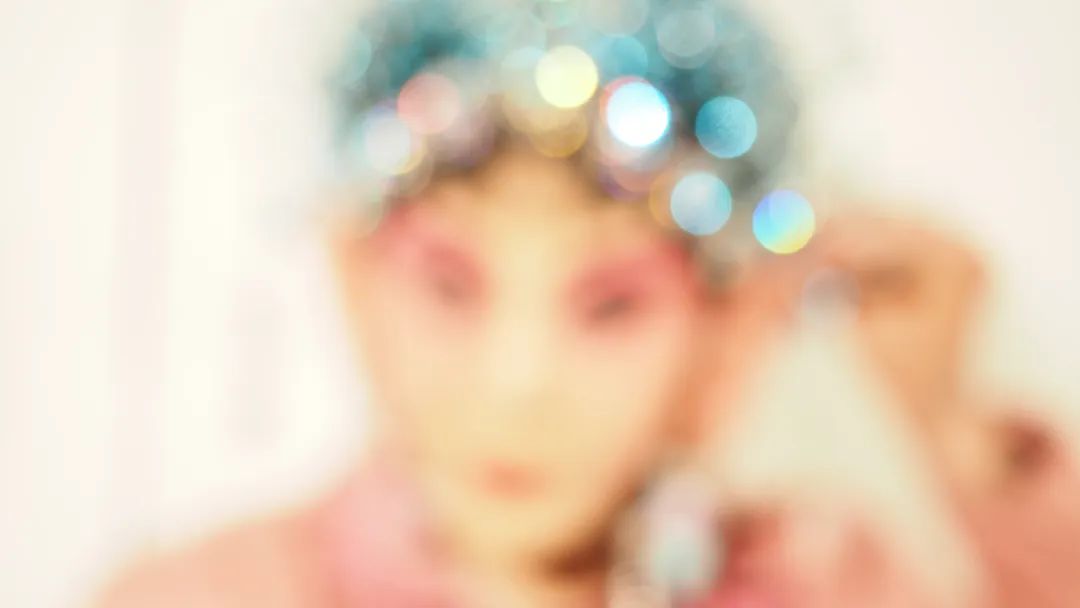
@张洁,《游乡》,(一)
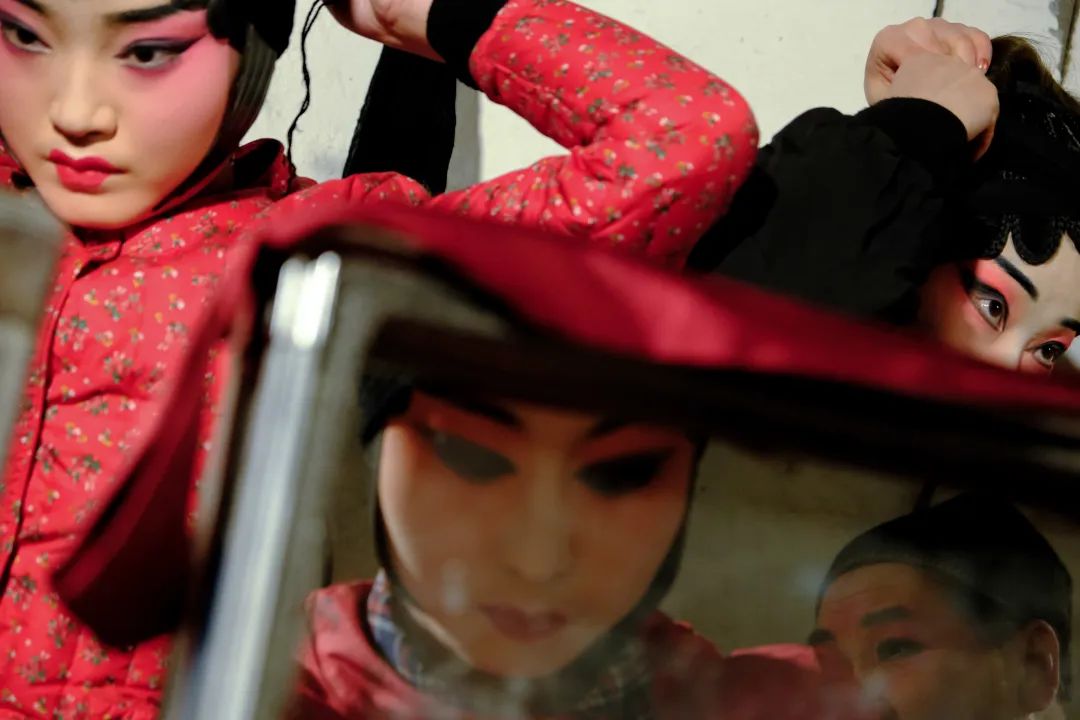
@张洁,《游乡》,(二)
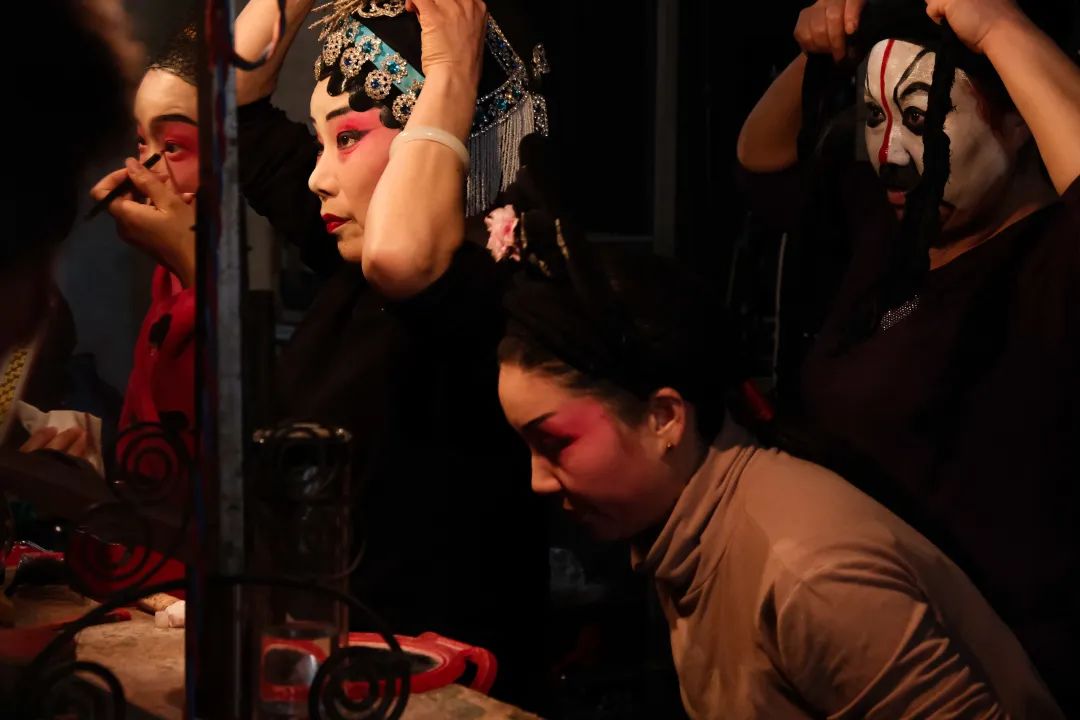
@张洁,《游乡》,(三)
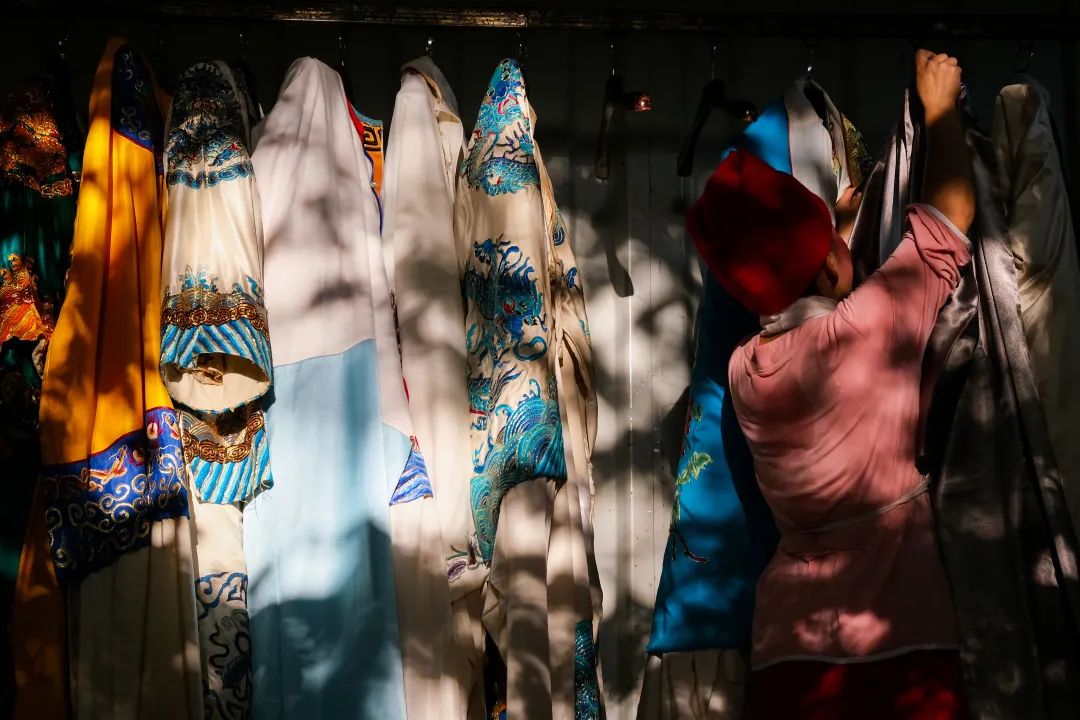
@张洁,《游乡》,(四)

@张洁,《游乡》,(五)
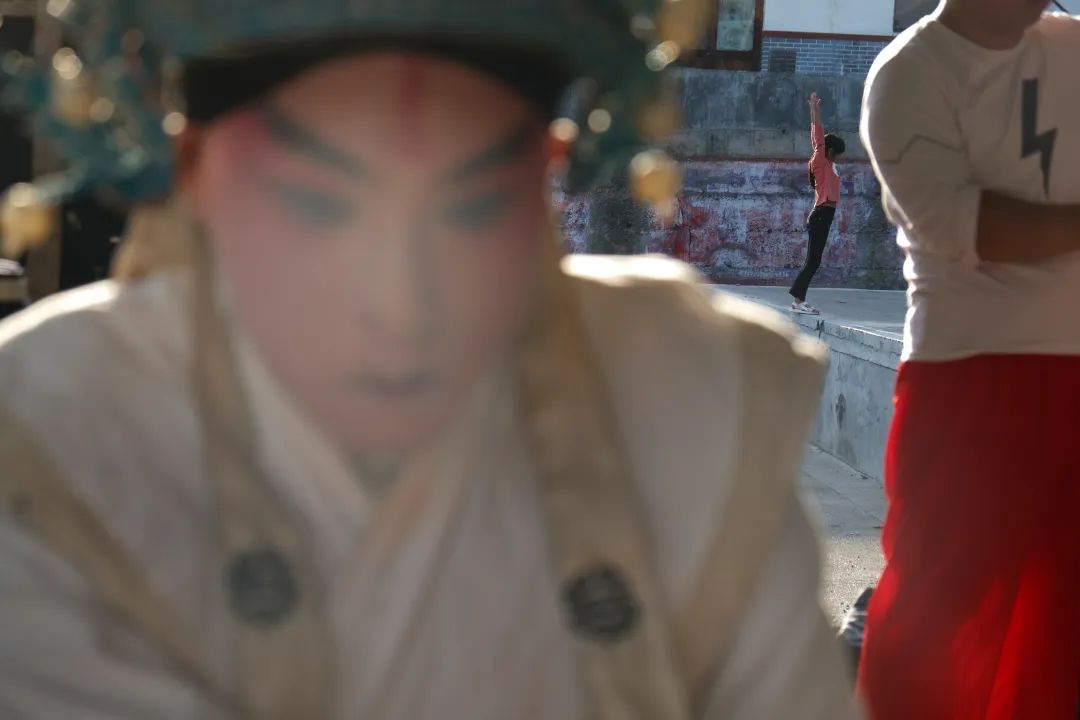
@张洁,《游乡》,(六)
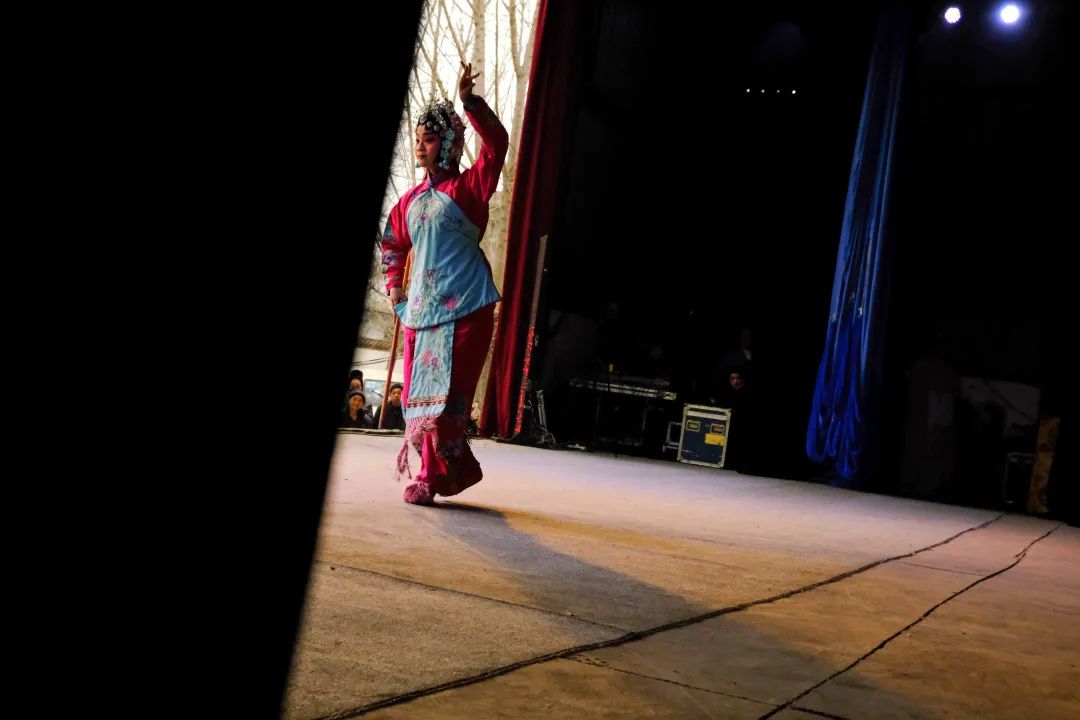
@张洁,《游乡》,(七)
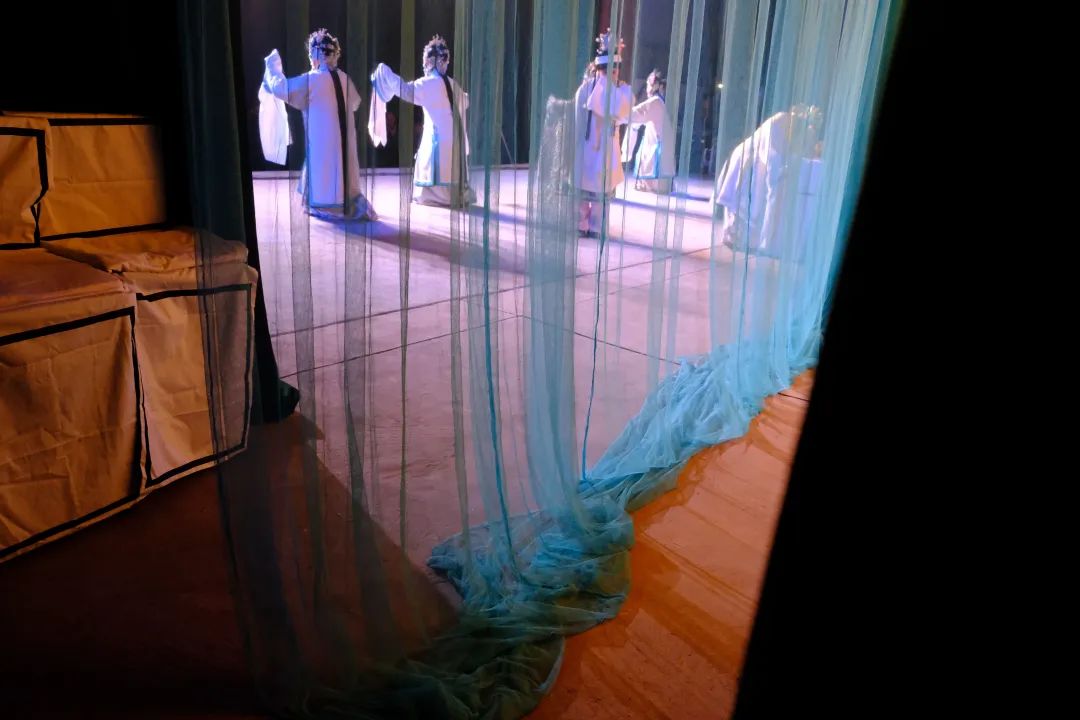
@张洁,《游乡》,(八)

@张洁,《游乡》,(九)
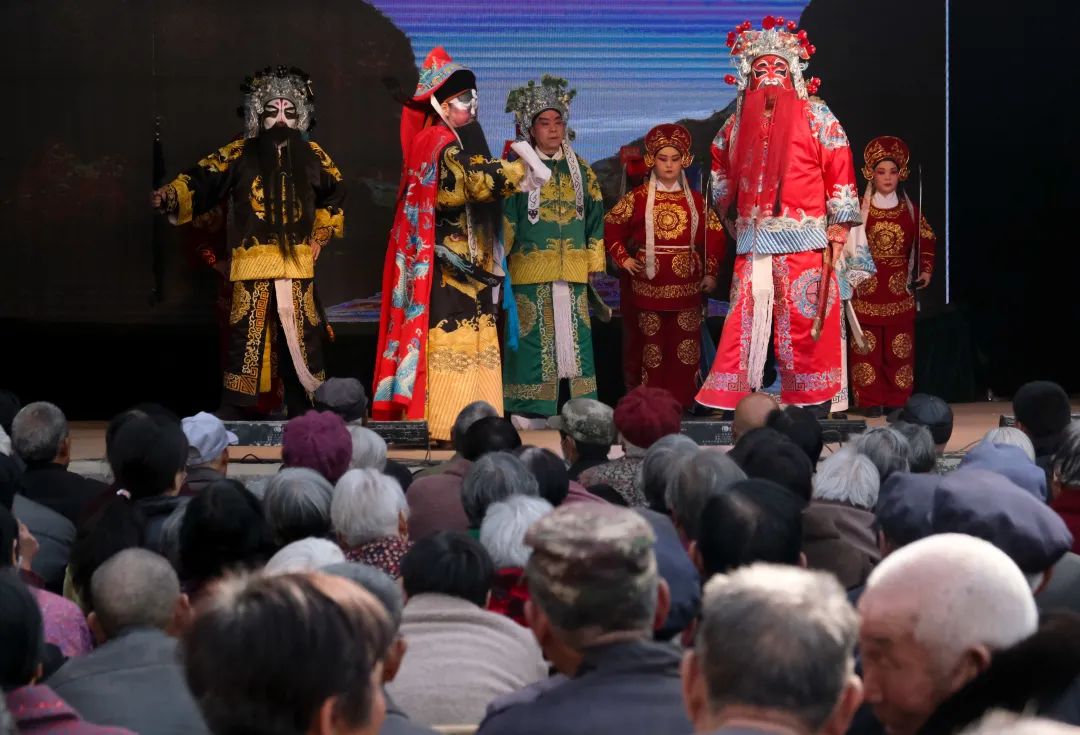
@张洁,《游乡》,(十)

@张洁,《游乡》,(十一)
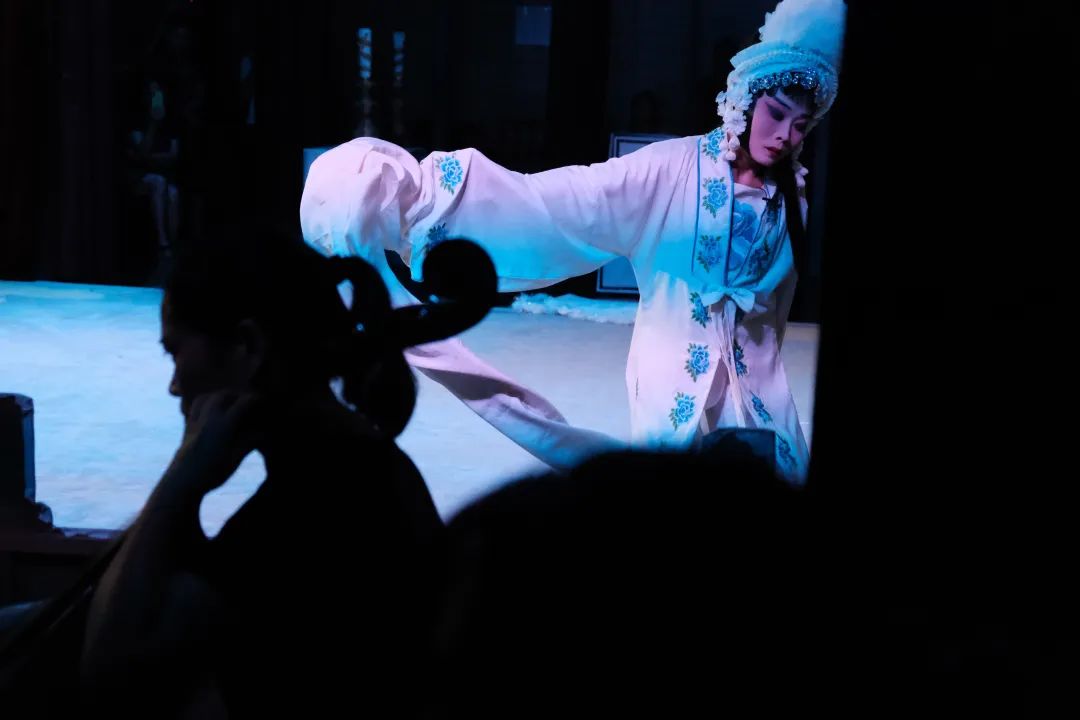
@张洁,《游乡》,(十二)
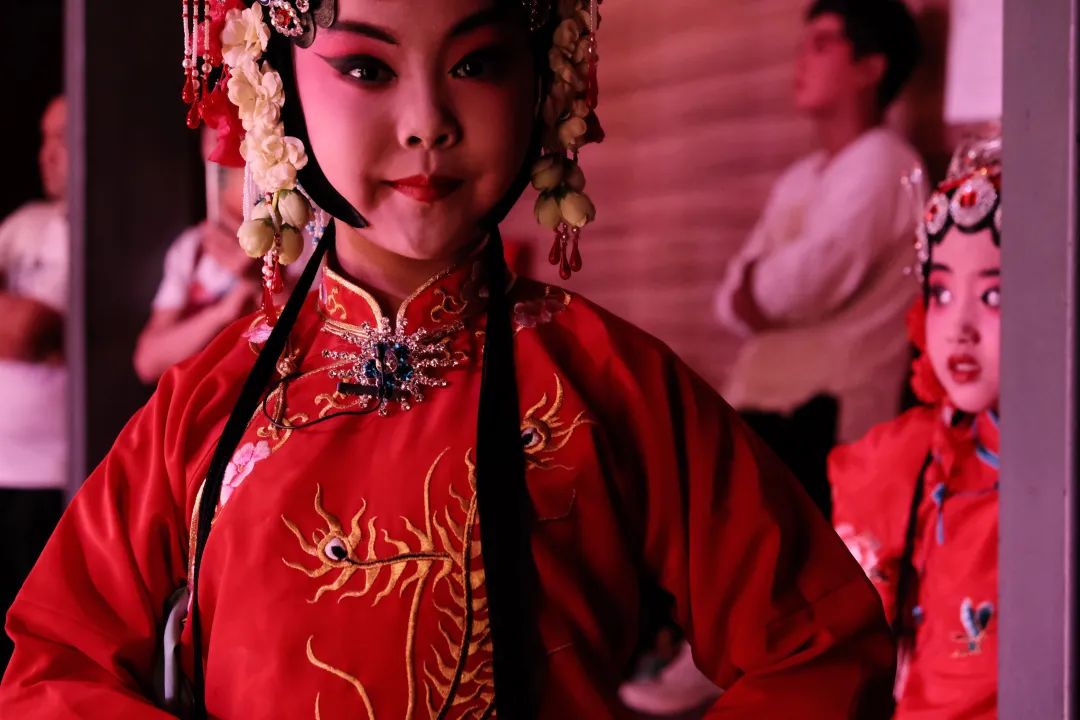
@张洁,《游乡》,(十三)
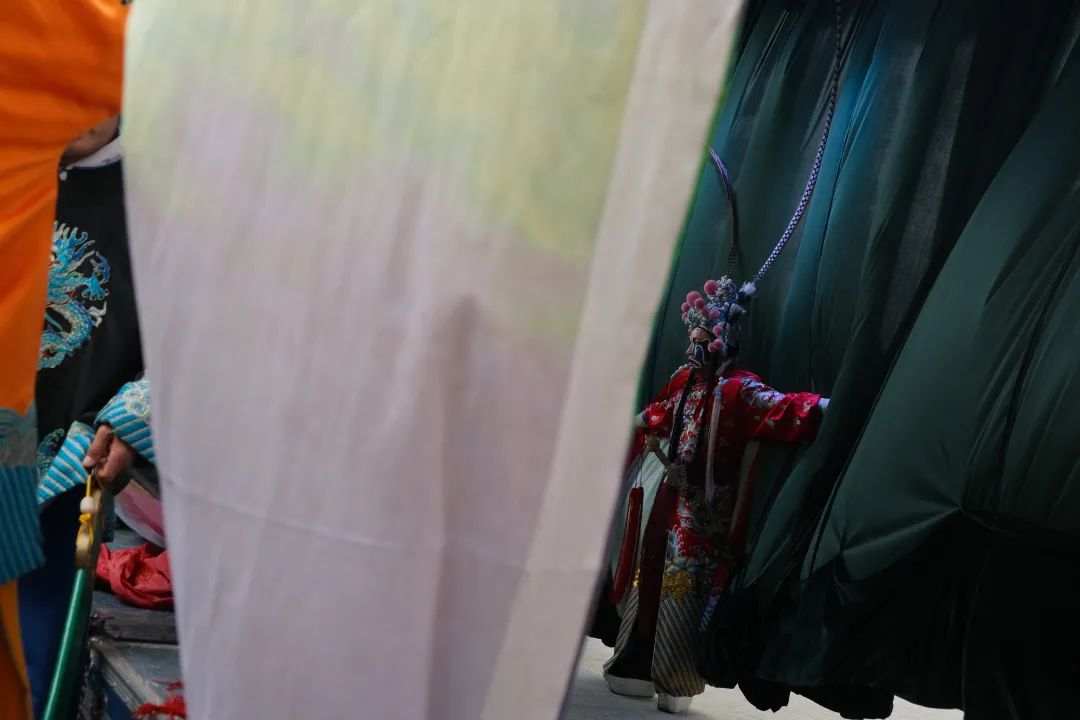
@张洁,《游乡》,(十四)
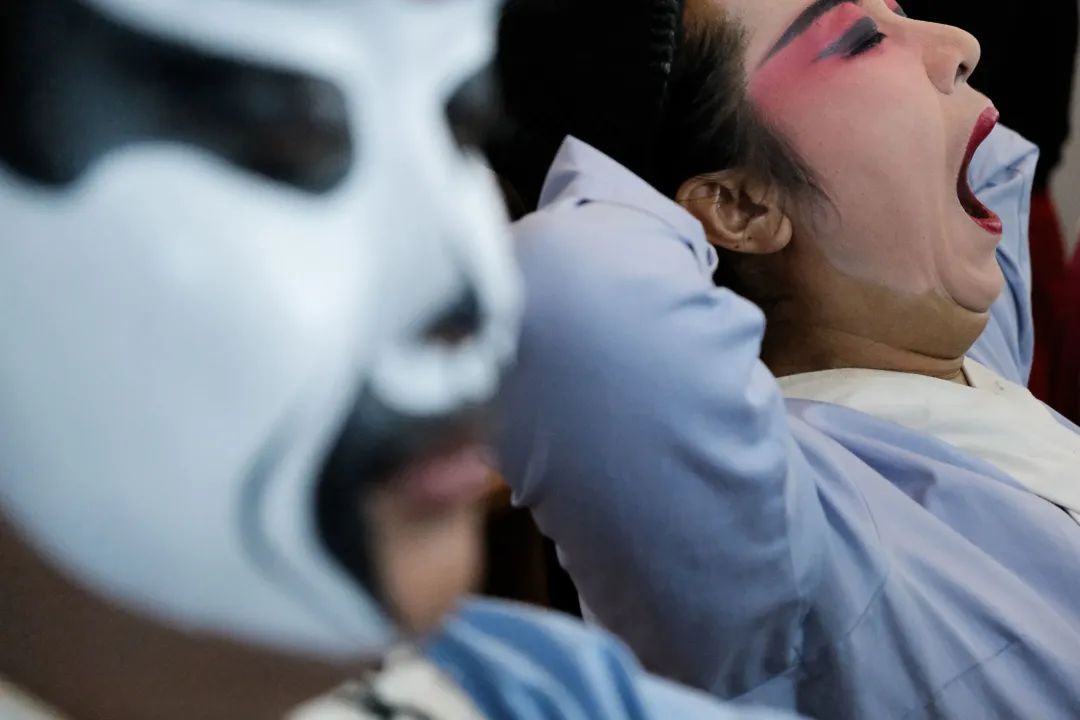
@张洁,《游乡》,(十五)

@张洁,《游乡》,(十六)
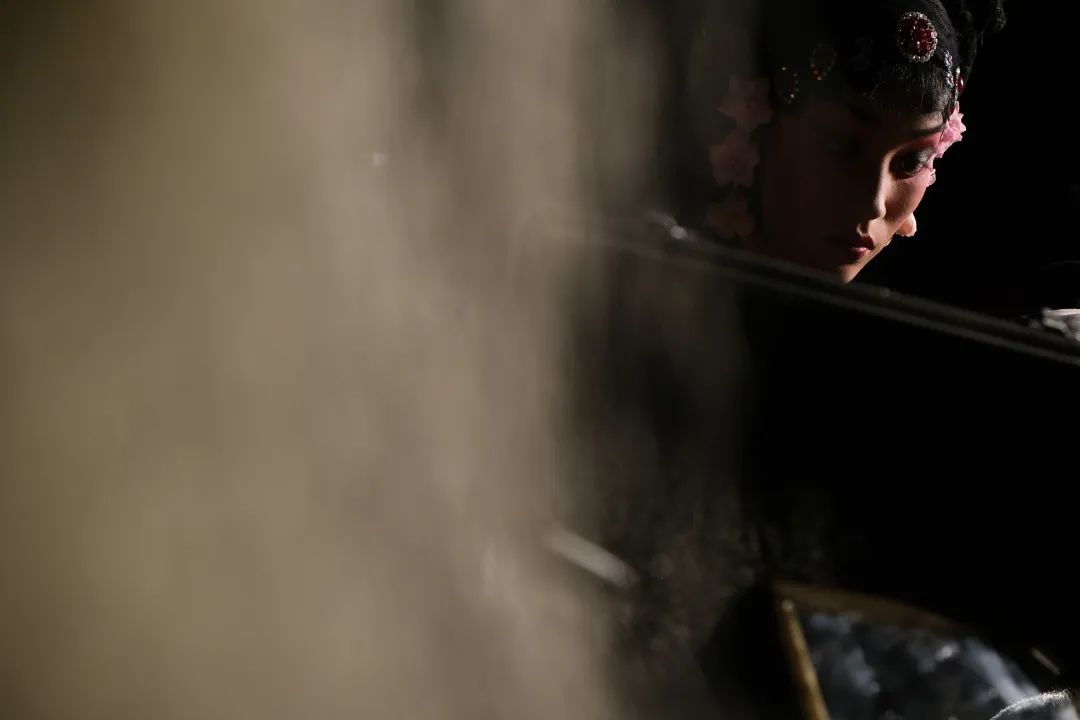
@张洁,《游乡》,(十七)
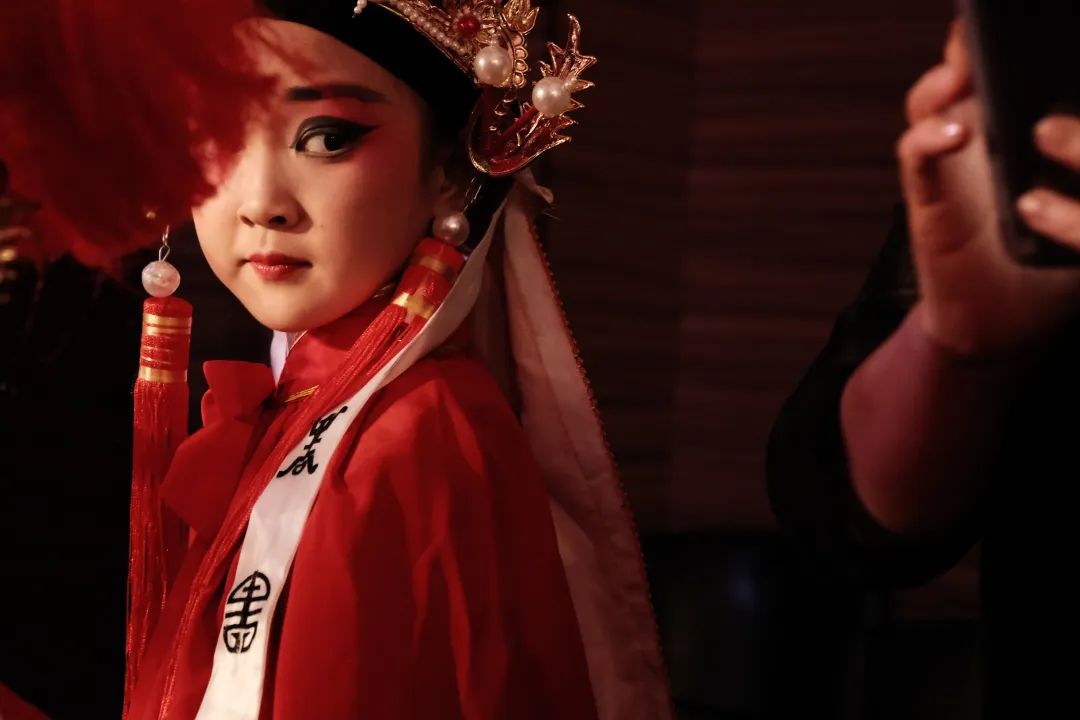
@张洁,《游乡》,(十八)

@张洁,《游乡》,(十九)

@张洁,《游乡》,(二十)
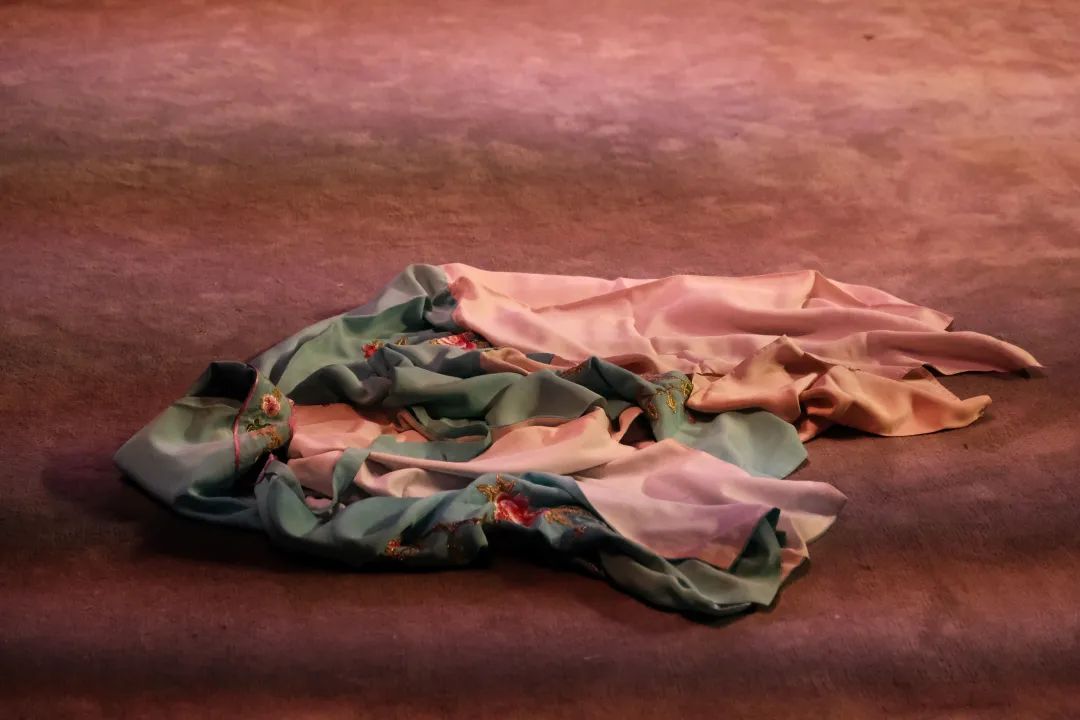
@张洁,《游乡》,(二十一)
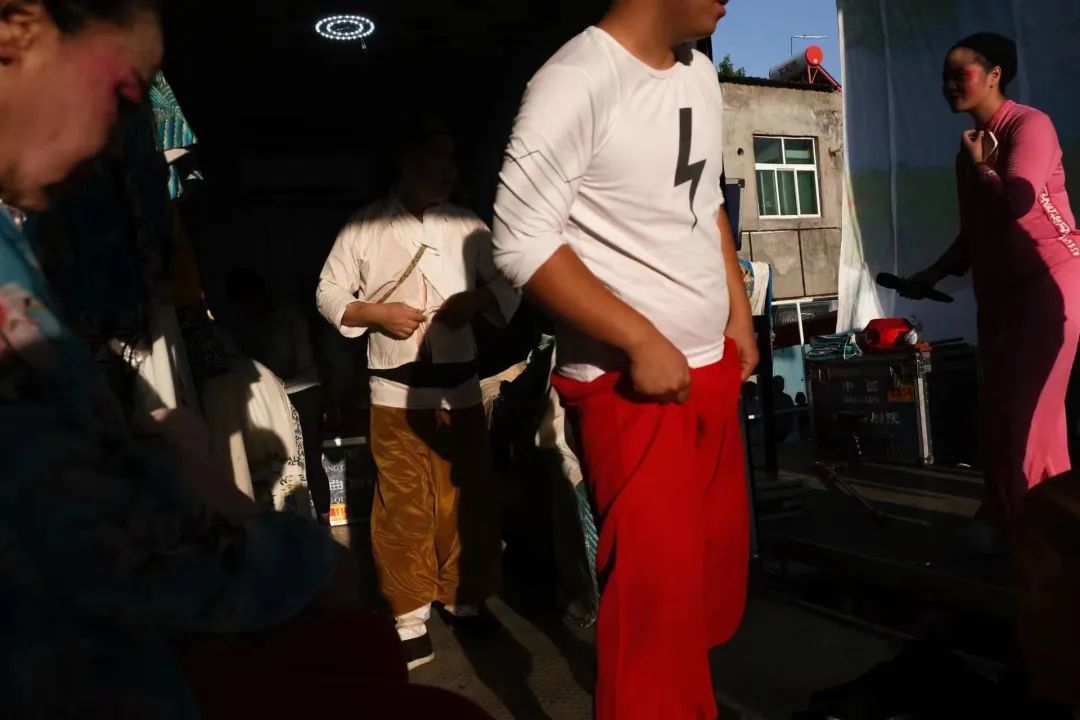
@张洁,《游乡》,(二十二)
| 艺术家简介 |
玛格南70周年摄影实践工作坊中国区学员,自由摄影师。
“摄影是沉默地在现场徘徊,沉默地穿越世界的唯一方法。”
——(法)让·鲍德里亚Jean Baudrillard
一腔穿越千年的洛阳小调曲 :
张洁摄影的当代叙事
作为主流形态的当代艺术自20世纪的后半页,就已经转向了艺术家个体内在精神的叙事和表达。生命体验与现实世界的对峙与对话,个性差异与文化流行的深层力量碰撞所形成的共振,成为这个时代的文化表征。从杜尚到毕加索、从波洛克到博伊斯、从沃霍尔到劳森伯格,等等的一大串足迹构成了艺术史的当代之路。
“摄影是生命、机器、外界三足鼎立的战场,是一种承担着感情与无意识的领域,敢于直面混沌不清的人类状态的精神。”这是日本摄影史学家的大竹昭子的研究论断。观察一位摄影师的拍摄行为及语言方式,及至现场的直觉意识与反应,是构成其叙事风格并由此感知其精神世界的直接路径。
在张洁的影像方式里,我们看到了被鲍德里亚把摄影称作是一种“反射写作”的印证。跳出摄影表现方式的时下流行套路,让拍摄还原到个人体验式地“感觉”的情绪释放,以“纯粹”化的视觉陈述,凸显出其敏锐地感性直觉的影像能力。张洁镜头前的一切都会在其视野里映现出扑朔迷离、模糊朦胧却是更为触及内心感受的视像,她的拍摄顺从了那个由现实各种因素复合点燃了的“自己”。成为机敏地接收现场动态视角和场面转换的情绪雷达,由心随性地捕捉其所释放出奇异细节的偶然性,并将观察中的物体与事项,在技术控制的操作下连接起来。
影像从现实对象中被结构成了新的形式,新的语言、新的语义,形式的角度和维度被重新调度,物体的现实秩序被重构,空间和时间被转换,矛盾构成的寓意指向却有了更深一层的丰富性。“照片的强度取决于它把现实事物否定到什么程度,并且可以做出什么样的新场面这一点。把某个对象变换成照片,就是从它上面逐一剥下所有特性——重量、立体感、气味、纵深、时间、连续性,当然还有意义。”(让·鲍德里亚语)这个链接着一个精神“元宇宙”的视觉单元,可以看作它是作者心理层面的情绪地形图,是在图像共有空间中的情感分享。
张洁对图像语言充沛的情绪化能力,总是可以使她在现场的视觉里能够发现最能触发其想象力的被摄体,或者说被摄体之中最触发想象的部分。她已愈发自由地谙出:摄影作为一种直观的表达媒介,在对象的确定性记述下,如何以开放式连接地表现。在看她从拍摄现场采掇的完整影像时,可以清晰地感受到:现实环境的情景驱使和氛围的情绪感染,快门的开启使她进入一种感性的亢奋状态,正是这种内在的情感共振与语言方式的契合,使她的影像图式在表现的方式上体现出了其独特地个性化叙事。于此,我们无法仅仅将其作为“纪实”或“直接”的摄影语言进行讨论,作为影像对客观物体的重构再现,作者在更为深刻的内在表达上已经走得更远。
在当代艺术潮流的时代背景之下,如果说从埃文斯到弗兰克,从布鲁斯·吉尔登到亚历克斯·韦伯,摄影语言的转换与演进,一直是以摄影家主体的精神诉求为核心的,它直接面对生活,却完全是即兴而非简单地“纪录’或‘观察’。这不仅是突破传统模式的路径,也是拓延艺术疆域于人的精神更为自由地得以呈现。张洁的影像叙事对现实语境的挪用与重构,试图用摄影显见或诱喻出潜于生命经验中诸多疑惑的遗址,是在这些场景中的另一次序形态中感受一种存在的超越。空间被重组的维度,彼此缠绕、互相碰撞,结构为一种多重、多义的复调格式,如果把张洁影像图式的解读作为一个对当下现实视像隐喻的索引,体悟外在物质与内部隐形世界的关系,其无法简单定义的复杂性在这里得到了揭示。当代艺术的“关系美学”从形式关系的多重复调结构中映现出当代社会的又一个层面上的真实。而影像语言本身蕴含的视觉动态势能,则伴随着某种内隐的情感而蔓延、铺展开来。
与其说照相机是张洁生活情绪的一种表达方式,毋宁说更像是她稀释个体生命状态里曾经困惑或积淤问题的工具。“镜头后的目光与她的兴趣和过去的沉积相交”,在视觉与现实世界复杂而又不确定瞬间一次次邂逅的同时,生发出具有文学气质的影像思考......
这些照片为她经年的生活之路,留下了一帧帧的精神印迹。
——于德水
2022年8月12日 于 郑州
Photography is the only way to silently wander around the scene and travel through the world in silence
——Jean Baudrillard
A Luoyang minor that spans thousands of years:
Contemporary Narrative of Zhang Jie's Photography
Since the second half of the 20th century, contemporary art, as the mainstream form, has shifted towards the narrative and expression of the artist's individual inner spirit. The confrontation and dialogue between life experience and the real world, as well as the resonance formed by the collision of personality differences and the deep forces of cultural popularity, have become cultural representations of this era. A series of footprints from Duchamp to Picasso, from Pollock to Boyce, from Warhol to Lawsenberg, and so on, constitute the contemporary path of art history.
Photography is a battlefield where life, machines, and the outside world are intertwined. It is a realm that bears the responsibility of emotions and unconsciousness, and the spirit of daring to face the chaotic human state. Observing a photographer's shooting behavior and language style, as well as their intuitive awareness and reactions on site, is the direct path to forming their narrative style and thus perceiving their spiritual world.
In Zhang Jie's imaging style, we see evidence that Baudrillard referred to photography as a form of "reflective writing". Jumping out of the current popular way of photography expression, allowing photography to revert to a personal experiential emotional release of "feeling", highlighting its keen and intuitive visual ability through a "pure" visual statement. Everything in front of Zhang Jie's camera will reflect in her field of vision a blurred and hazy image that touches her inner feelings more deeply. Her shooting follows the "self" ignited by the combination of various factors in reality. Become an emotional radar that cleverly receives dynamic perspectives and scene transitions on site, capturing the randomness of the strange details released by the heart, and connecting the observed objects and events under technical control.
Images have been structured into new forms from real objects, with new languages, new semantics, and the angles and dimensions of form being rearranged. The real order of objects has been reconstructed, space and time have been transformed, and the moral direction formed by contradictions has gained a deeper richness. "The intensity of a photograph depends on the degree to which it negates real things and what kind of new scenes it can make. To transform an object into a photograph is to strip all the characteristics from it one by one - weight, stereoscopic sense, smell, depth, time, continuity, and of course, meaning." (Jean Baudrillard) This visual unit links a spiritual "Metaverse", It can be seen as an emotional terrain map at the author's psychological level, which is emotional sharing in the shared space of images.
Zhang Jie's rich emotional ability in image language always enables her to discover the subject that can most trigger her imagination, or the most imaginative part of the subject, in the visual experience of the scene. She has become more and more free to understand how photography, as an intuitive medium of expression, can be expressed in an open and connected manner under the deterministic description of the object. When looking at the complete images she collected from the shooting scene, one can clearly feel the driving force of the real environment and the emotional infection of the atmosphere. The opening of the shutter puts her into a state of emotional excitement. It is precisely this internal emotional resonance and the fit of language that reflects her unique personalized narrative in the way she expresses her image schema. Therefore, we cannot simply discuss it as a "documentary" or "direct" photographic language. As the reconstruction and reproduction of objective objects through images, the author has gone further in terms of deeper inner expression.
In the context of contemporary art trends, if we say from Evans to Frank, from Bruce Gilden to Alex Weber, the transformation and evolution of photography language has always been centered around the spiritual demands of the photographer's subject, which directly faces life, But it's completely improvised, not simply 'Record' or 'Observation'. This is not only a path to break through traditional patterns, but also a way to extend the realm of art and present the human spirit more freely. Zhang Jie's image narrative misappropriates and reconstructs the real context, attempting to use photography to reveal or allure to various suspicious sites hidden in life experience. It is to feel a transcendence of existence in another order of form in these scenes. The dimensions of space are restructured, intertwined and intertwined with each other The structure of collision is a multiple and polysemous polyphonic format. If the interpretation of Zhang Jie's image schema is used as an index to the metaphorical representation of current reality, and the relationship between external matter and the internal invisible world is understood, the complexity that cannot be simply defined is revealed here. The "Relational art" of contemporary art reflects another level of reality of contemporary society from the multi tone structure of formal relations. The visual dynamic potential energy contained in image language itself spreads and unfolds with some implicit emotions.
Rather than being a way of expressing Zhang Jie's emotions in life, the camera is more like a tool for diluting the confusion or accumulation in her individual life state. The gaze behind the camera intersects with her interests and past deposits, and while encountering the complex and uncertain moments of the visual and real world time and time again, it emits a literary and imaginative contemplation.
These photos have left a spiritual imprint on her years of life journey.
——Yu Deshui
Zhengzhou, August 12, 2022


 豫公网安备 41019602002106号
豫公网安备 41019602002106号